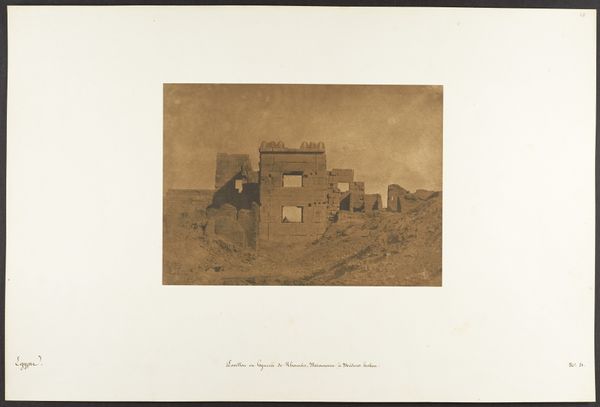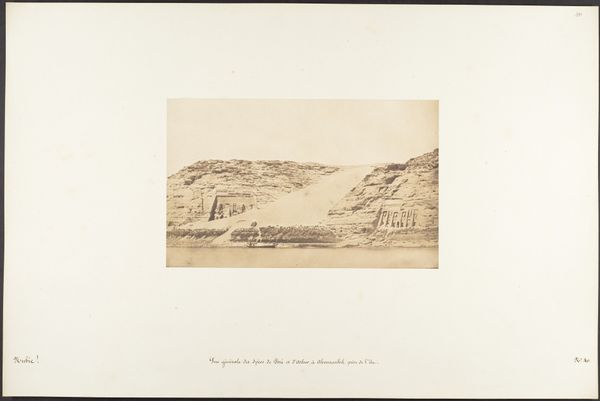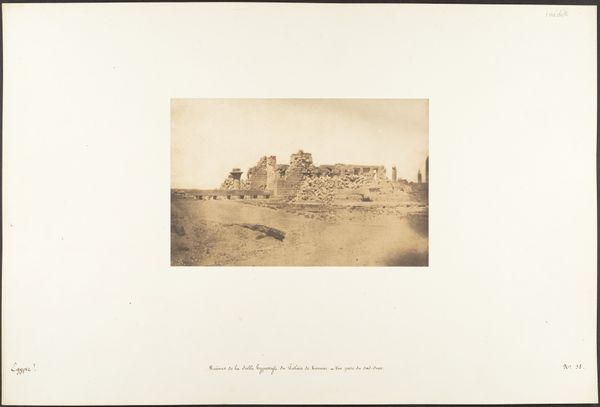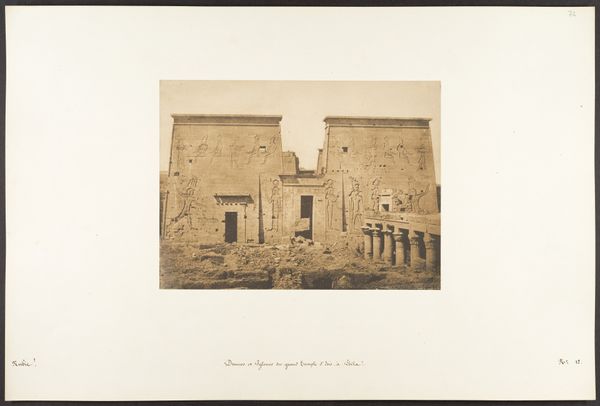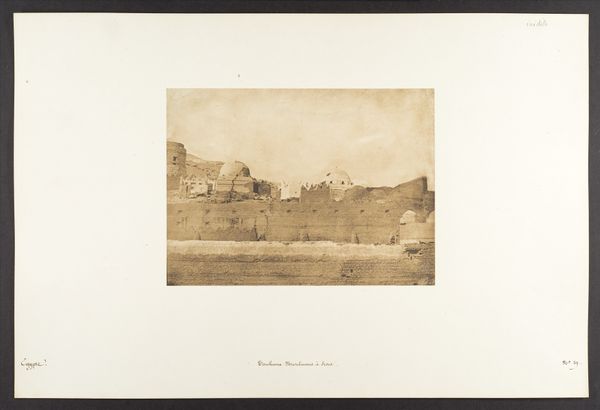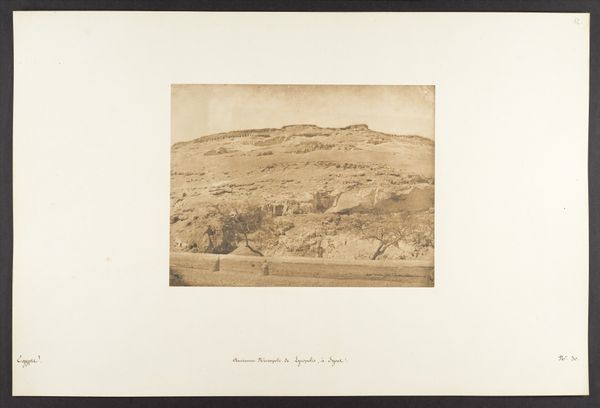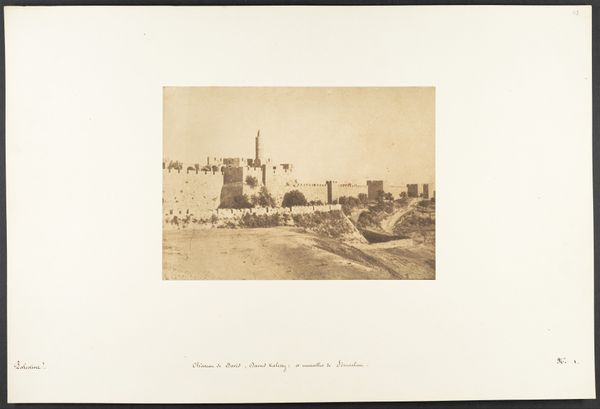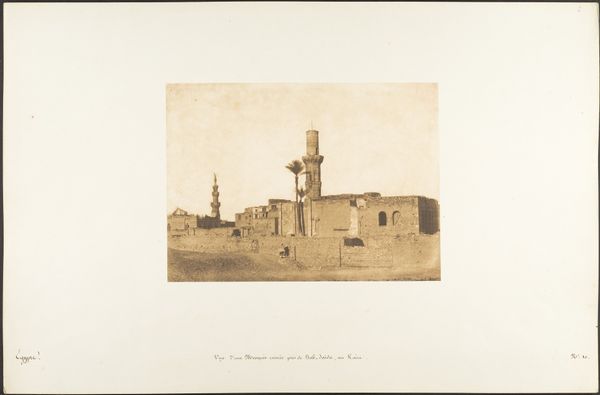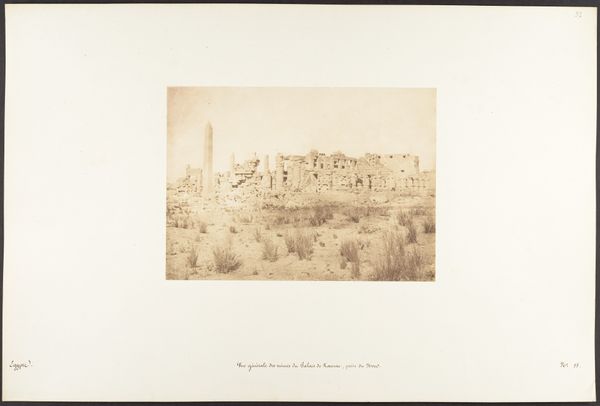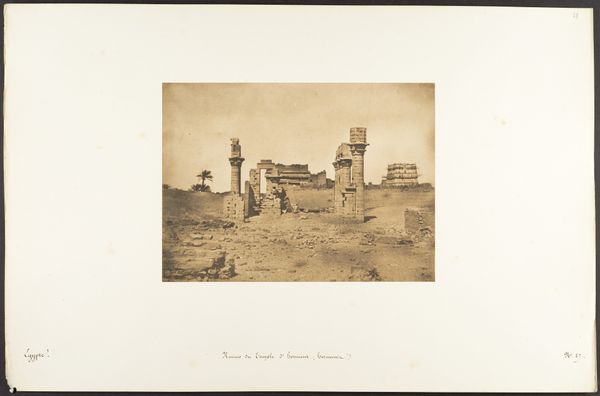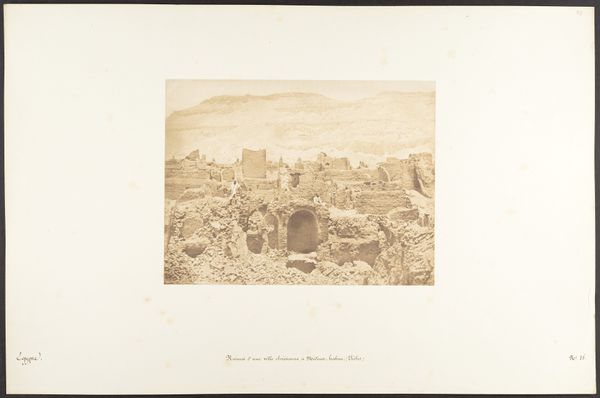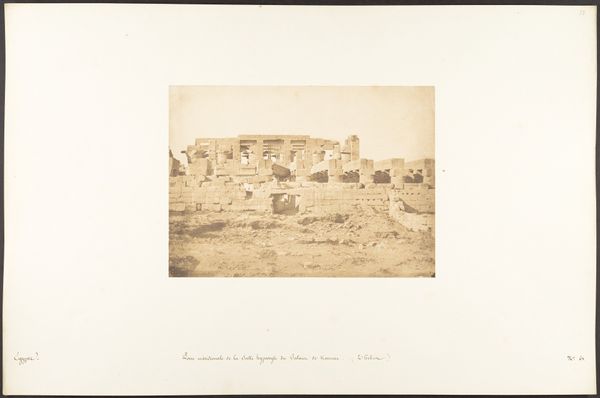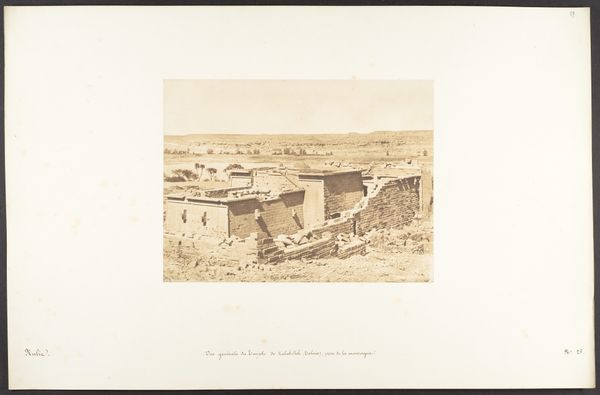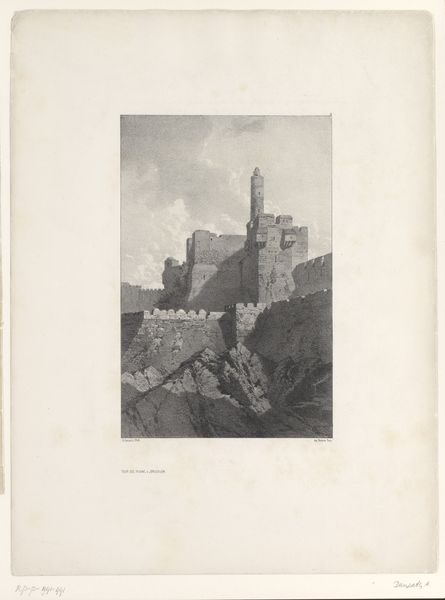
photography, architecture
#
landscape
#
photography
#
islamic-art
#
architecture
Dimensions: Image: 6 1/4 × 8 9/16 in. (15.9 × 21.7 cm) Mount: 12 5/16 × 18 11/16 in. (31.2 × 47.5 cm)
Copyright: Public Domain
Editor: Here we have Maxime Du Camp's photograph, "Mosquée de Belal, au Sud de Philae (Rive droite)," taken in 1850. It's a very textural, almost sandy-looking image of what I assume is a mosque. What historical and social contexts are bubbling to the surface for you? Curator: This photograph is a really interesting artifact when we consider the power dynamics at play in early photography. It’s not just a landscape or architectural study. What do you know about 19th-century French colonial interests in Egypt at the time this photograph was taken? Editor: I know that European powers were heavily invested in controlling trade routes and resources… Is that relevant here? Curator: Absolutely. Du Camp traveled to Egypt with Gustave Flaubert on a mission to document and, in effect, possess the region through visual representation. So, how does seeing the image through that lens—thinking about its colonial gaze—shift your understanding? Editor: I see it differently now. The ruinous state of the mosque almost feels symbolic, like a premonition or justification for colonial intervention. The seemingly objective gaze is far from neutral. Curator: Exactly. The choice to frame the mosque this way, highlighting its state of disrepair, plays into a broader narrative of cultural and political dominance. Were Islamic voices or Egyptian perspectives considered or included in the creation of this work? Editor: Probably not, which adds another layer of complexity to the image. It becomes a statement, conscious or unconscious, about whose stories are valued. Thanks for pointing that out. Curator: And whose are erased. Consider how that still echoes today when images, especially of the Middle East, are created and circulated. Editor: It’s a potent reminder that photographs are never truly objective records of reality.
Comments
No comments
Be the first to comment and join the conversation on the ultimate creative platform.
